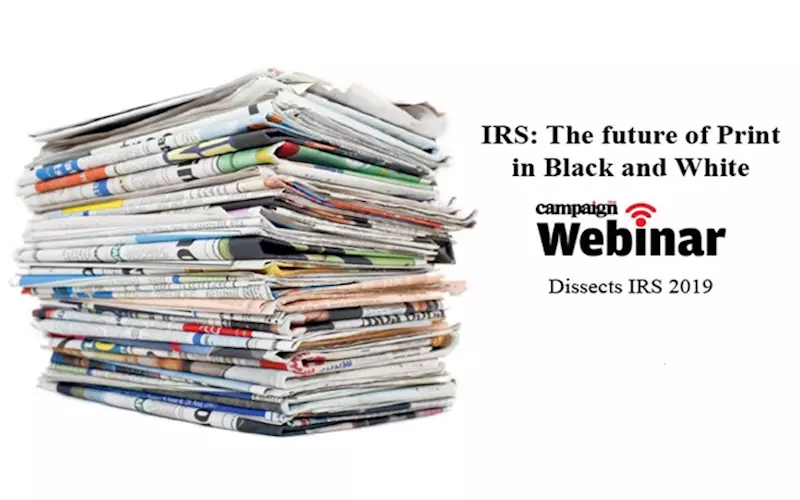The return of IRS has ended the data drought in print
Four panelists from marketing, research, media services and publishing — Abhishek Gupta, CMO, Edelweiss Tokio Life Insurance; Ashish Karnad, executive director, Nielsen; Himanka Das, CEO, Vizeum; and Malcolm Raphael, senior vice-president, Times Group — dissected the findings of the IRS 2019 Q1 and answered a range of queries from participants during the Campaign India Webinar organised last week.
15 May 2019 | By PrintWeek India
Karnad kickstarted the proceedings by throwing lights on the methodology implemented by Nielsen while doing the fieldwork of the latest round of Indian Readership Survey (IRS). He dwelled in detail on a range of issues from eliminating the Kish Grid in upscale households to introducing a separate data set for low pick-up levels of publications.
He pointed out that the NCCS D is further shrinking. He said Nielsen has raised the issue with MRUC and other industry bodies that there might be a need to have a more sharply defined socio-economic discriminator than the NCCS.
Raphael pointed out that the data drought in print had ended with the return of the IRS. The absence was even more stark because of the surplus of data about the digital medium and the weekly reportage of the television viewership data.
He said data leads to higher engagement with the medium and added that the company is looking forward to quarterly reports from the IRS.
Gupta highlighted the need for publishers to focus on young readers in their late-teens as this audience was not too enthused with the print medium and consumed their news digitally. Otherwise, the numbers could go down in the times to come, he said.
He added that immediacy of reading newspapers was declining (referring to the Average Issue Readership numbers), which made marketers like him a little uncomfortable. He also urged the fraternity to work towards combining data from BARC, TAM and other service providers to give marketers a unified view of the customer.
Das spoke about consumer evolution that is reflected in studies like the IRS. He said it's not just about reading newspaper, but about engaging with the different sections of the paper instead of the entire whole. He also spoke about digital natives choosing the ePapers instead of a print version. He said it's not just about readers but about the interest level of the audience, and if media experts had to look at opting for the combination of a print newspaper and its eOffering.
The remarks were followed by an engaging question and answer session with the listeners.
Listen to the entire Webinar at https://youtu.be/4EXhpFUgitE.
(Courtesy Campaign India)














 See All
See All